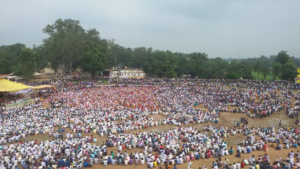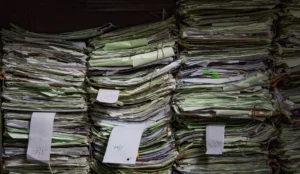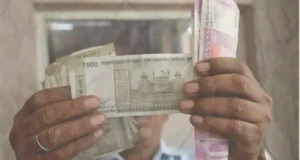

What Makes Special Leave Petitions ‘Special’?
On March 19 2010, a division bench of the Supreme Court of India (SC) in Mathai @ Joby v George ((2010) 4 SCC 358) had referred the matter to a constitution bench to determine the kind of cases in which special leave to appeal could be granted under Article 136 of the Constitution. Thus, the ambit of the ‘discretionary’ appellate jurisdiction of the SC was sought to be determined.
The concern behind this reference order in 2010 was that under Article 136, “all kinds of special leave petitions were being filed against every kind of order”. The order cited two aspects of this issue: 1. arrears in the SC were increasing heavily and Special Leave Petitions (SLPs) formed the main chunk and 2. the SC was being converted into a typical appellate court entertaining matters that do not involve any significant questions of law or the Constitution. Additionally, the reference order listed out a few categories of cases that could be entertained under Article 136 for reference of the constitution bench. Matters involving substantial questions of law and the Constitution, matters of public importance, validity of Central and State laws and cases of grave miscarriage of justice were some of the main types of cases mentioned.
However, on January 11 2016, a five-Judge constitution bench refused to reduce the scope of Article 136 either by issuing guidelines or by limiting the types of cases that could be granted special leave.
While refusing to do so, the SC failed to notice a few significant observations made by it in the past. Apart from repeatedly cautioning that Article 136 must be used ‘sparingly’, the SC has pinpointed the actual duty of the apex court while entertaining SLPs as well. In Kunhayammed v State of Kerala (AIR 2000 SC 2587), the court had observed that SLPs must be admitted only in cases where substantial questions of law or public importance are involved or there is manifest injustice caused. In Rafiq v State UP (1981 AIR 559), Justice Krishna Iyer had clarified that SLP jurisdiction is meant mainly to “correct manifest injustice or errors of law of great moment”. Further, in Bengal Chemicals Ltd v Their Workmen (AIR 1959 SC 633), a noteworthy exposition of the nature of Article 136 and the SC’s duty can be seen. The SC held that even though Article 136 is couched in the broadest terms as possible, the SLP jurisdiction must be invoked only in cases where there is violation of natural justice, substantial and grave injustice done to the parties or those which require elucidation of important principles of law. Hence, the SC in Mathai Reference should have taken a more serious look at reconsidering Article 136.
“Limitations on discretion are as inevitable and abundant as the sources of discretion” [i]
What is as clear as crystal is that discretion in boundless terms, which is the essence of Article 136, is what the SC refused to give away in this case. It is purely human that different persons have dissimilar standards of applying discretion and it is no different for the SC judges. This has resulted in totally inconsistent standards of admitting SLPs by the SC as the court sits in more than 10 division benches! Notably, in Pritam Singh v The State (AIR 1950 SC 169), the SC had warned that as far as possible, a ‘uniform standard’ should be adopted in admitting SLPs. Unfortunately, no such regular patterns have been observed by the SC till date.
The outcome of such an undesirable situation can be best explained by the High Court of Australia’s judgment in Norbis v Norbis ((1986) 161 CLR 513): “An unfettered discretion is a versatile means of doing justice in particular cases, but unevenness in its exercise diminishes confidence in the legal process”. To avert such a scenario, it is crucial that broad principles may be expressed to guide the exercise of judges’ discretion under Article 136 as suggested by the reference order. This would help in sinking the significance of personal predilections of each judge/bench and bring in certain levels of uniformity in exercising such a wide discretionary jurisdiction.
Moreover, the SC ought to have remembered that discretion in the ordinary sense and judicial discretion, which is regulated by rules or judicial principles, are different.[ii] Even the Black’s Law Dictionary defines judicial discretion as the discretionary action of a Judge which is bounded by principles of law and not unrestrained.
Even the drafters of Article 136 were of the belief that there ought to be some self-imposed guidelines. While speaking in the Constituent Assembly on June 6 1949, Shri H.V. Pataskar had stated: “The Supreme Court is not likely to grant special leave in any matter whatsoever unless it finds that it involves a serious breach of some principle in the administration of justice, or breach of certain principles which strike at the very root of administration of justice as between man and man”. Unfortunately, the reference order in Mathai shows that after 66 years since its inception, the SC has not lived up to that founding belief.
The ‘Supreme’ duty of the SC
The nature of guidelines prescribed in the reference order, the judgments discussed and seen in the Constituent Assembly Debates essentially aimed at reminding the SC of its predominant duty i.e. to adjudicate issues relating to the Constitution and interpret legal principles. Why this is important is because our SC has not been able to fulfil that duty satisfactorily. According to Mr. Alok Prasanna Kumar, in 2014, 34,500 SLPs relating to civil cases alone were filed in the SC and in almost 44 % of those cases, notice was issued by the SC. This shows that a non-judicious use of Article 136 jurisdiction has caused the SC to transform into an ordinary appellate court regularly dealing with very high number of ordinary civil or criminal appeals.
Consequently, the number of constitutional cases decided every year has declined. In that context, Chief Justice T.S. Thakur’s recent move to ensure constitution bench hearings on every Mondays and Fridays is a welcome step to dispose of all the 25-30 constitutional cases pending in the SC today. If only the SC in Mathai Reference had contributed to this cause, it would have been an even better start in 2016 for the judiciary.
Notes
[i] C.Schneider, Discretion and Rules: A Lawyer’s View in K.Hawkins (ed.), The Uses of Discretion (Oxford University Press 1992)
[ii] N.Isaacs, The Limits of Judicial Discretion, Yale Law Journal, Vol. 32, No. 4 (1923)
The views expressed in this article are solely those of the author’s and they do not represent the views of DAKSH.

Aparna Chandra

Rishabh Sharma
RECENT ARTICLES


POLITICAL MANIFESTOS AND JUDICIAL REFORMS

Challenges in NCLT Filing Procedures: Advocates’ Perspectives

Beyond Revenue – Reimagining Court Fee As A Policy Tool For Judicial Administration

-
Rule of Law ProjectRule of Law Project
-
Access to Justice SurveyAccess to Justice Survey
-
BlogBlog
-
Contact UsContact Us
-
Statistics and ReportsStatistics and Reports
© 2021 DAKSH India. All rights reserved
Powered by Oy Media Solutions
Designed by GGWP Design